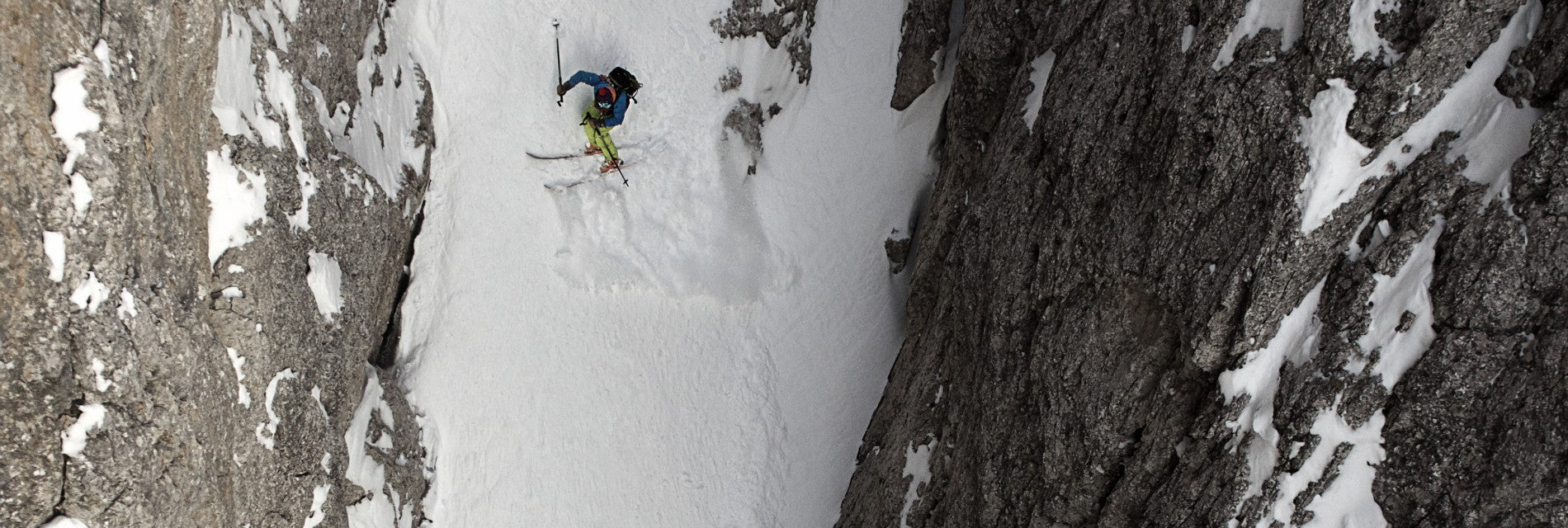Jöttnar’s Tom Grant was born in the USA and moved to south-east England at age 11. Now based in Chamonix, he skis and climbs full time and has developed a particular specialism in the art of steep skiing.
He’s skied many of the steepest lines in and around the Mont Blanc massif as well as technical first descents in Baffin Island, British Columbia and Norway. Most recently, he and his partners became the first people to ski the Caroline Face on New Zealand’s Mt Cook, one of the world’s largest unskied lines.
Here he offers five pieces of advice for confident off-piste skiers looking to move into more serious terrain.
1. Skiing should be the easy bit
When skiing a steep line where falling simply isn’t an option, making a technical mistake should be the least of your worries. There are already major objective hazards on big mountains without taking into account the risk of blowing a turn. Seracs, avalanches, sluff, unforeseen ice; these are all hazards which must be evaluated and mitigated against. Steep skiing can often require making tricky and critical judgements and a good level of mountaineering skill, as well as the finely-honed art of being in the right place at the right time. By the time a skier finds themselves on a 50+ degree no-fall zone they must have a sufficient level of technical competence that the risk of falling is miniscule. Steep skiing is dangerous enough, so we must try to master what we can control.
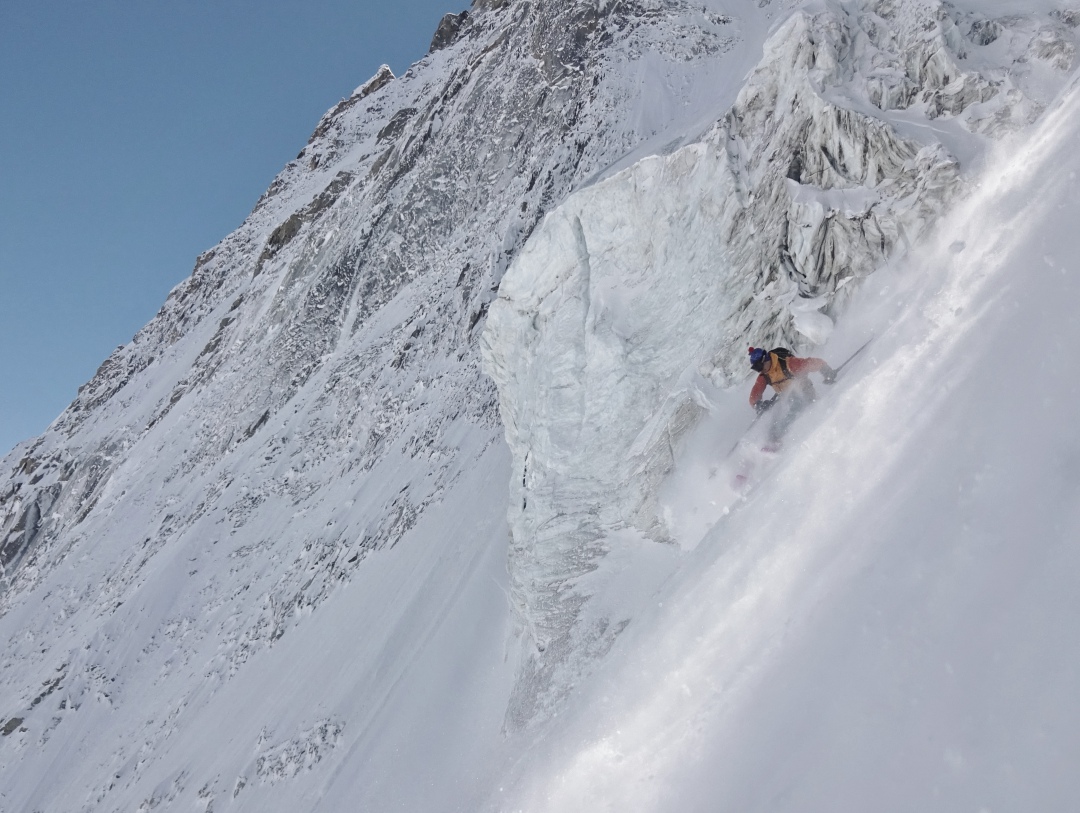
2. Become an alpinist
To ski safely on big lines, it’s equally important to be an alpinist as well as a skier. Technical descents can sometimes require a technical ascent. On the way down it may be necessary to build anchors and abseil, to down climb (hopefully not), to ski while on belay and to otherwise use skills and techniques more commonly associated with alpine climbing. Being an alpinist isn’t just about skills however, it is also about tactics and psychology; having the confidence to know you can get yourself out of trouble or endure an unplanned bivy. This is built up through climbing in the mountains year-round.
Being an alpinist isn’t just about skills, however, it is also about tactics and psychology; having the confidence to know you can get yourself out of trouble or endure an unplanned bivy.
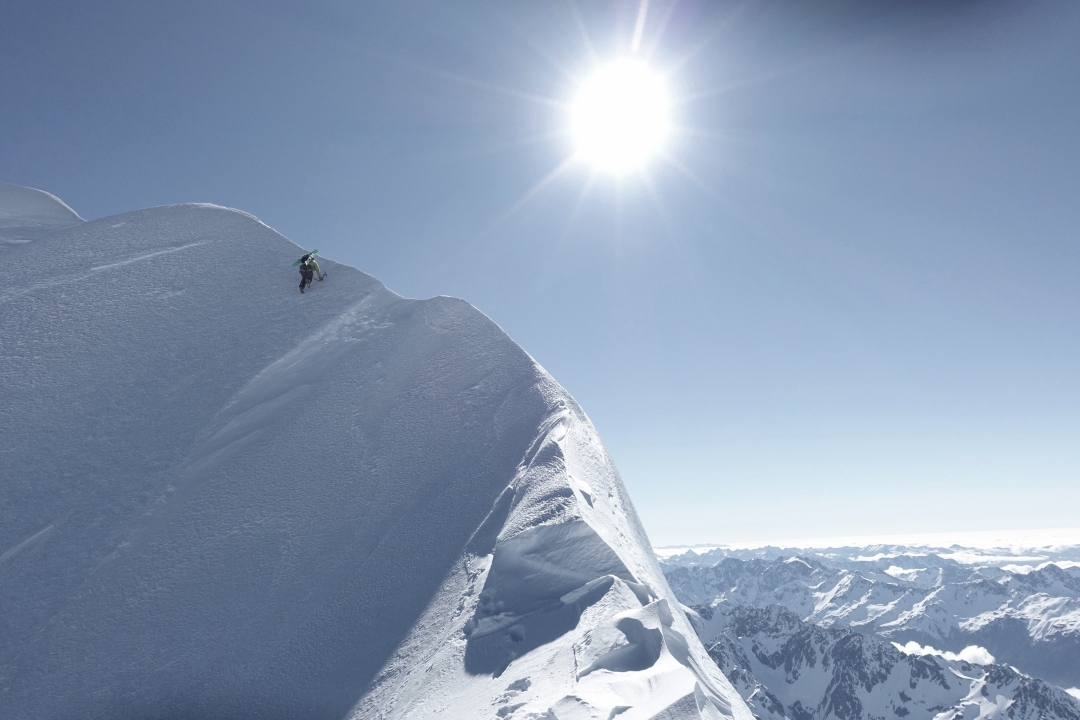
3. Do your homework
Be thorough in your research and planning. I’ve learnt this the hard way and the times I’ve not done my homework on an objective it’s sometimes come back to bite me. This is especially important if you are skiing a line ‘onsight’, meaning dropping in from the top without having climbed it first. Monitor the changing conditions on lines you aspire to ski, and know what gear you are likely to need.
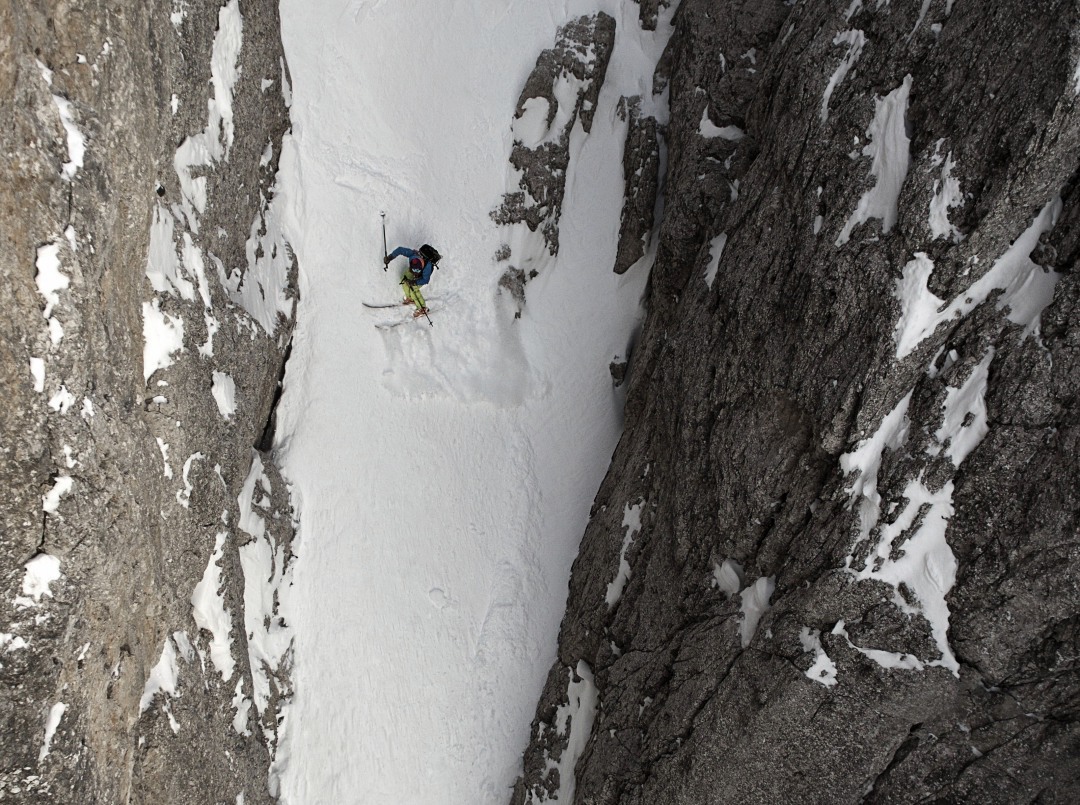
4. Have the right team
A shared approach to the mountains and a compatible risk tolerance are crucial to success and safety. When you’re pushing yourself mentally and physically on a big line it can only be done with the right partners. Trust in each other’s skills must be strong, and each team member must at times lend the others psychological strength. Riskier and more tiring tasks must be shared, whether it’s breaking trail, skiing first or setting up an abseil anchor in a delicate position.
Trust in each other’s skills must be strong, and each team member must at times lend the others psychological strength.
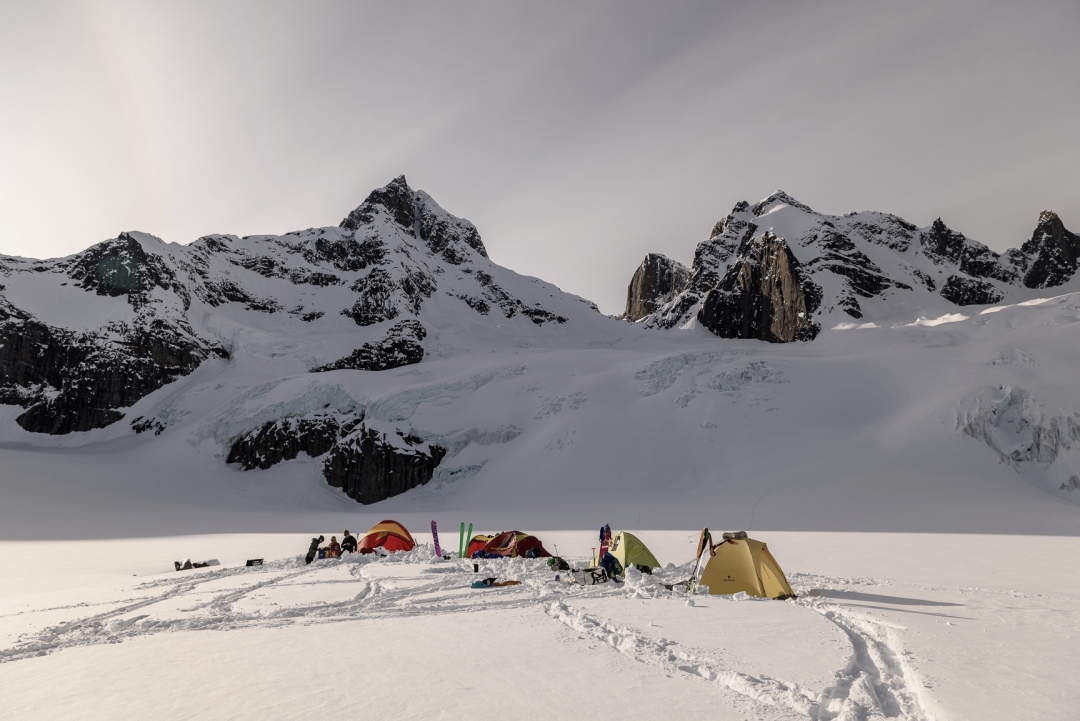
5. Be honest with yourself
The old cliché ‘you need to want it’ rings true. Be honest with yourself about the reasons for wanting to expose yourself to risk. This takes a lot of self-awareness and may expose some uncomfortable truths. Motivations for taking risks are complex and difficult to unpack but there is nothing worse than being on an intimidating mountain or a risky situation and not actually wanting to be there.
When approaching a big objective it’s completely normal to be apprehensive. To overcome this fear and do it anyway it’s essential to try and understand what you are feeling, and why. Is the strange gut feeling due to dangerous conditions or just healthy nerves? It’s important to articulate why or why not an objective is a good idea. When you’re a bit scared, tired and cold, it can be all too easy to bail. Our mind can play tricks on us, trying to rationalise reasons for turning back. However, experience teaches us to push through when the time is right and that we will be handsomely rewarded for doing so.
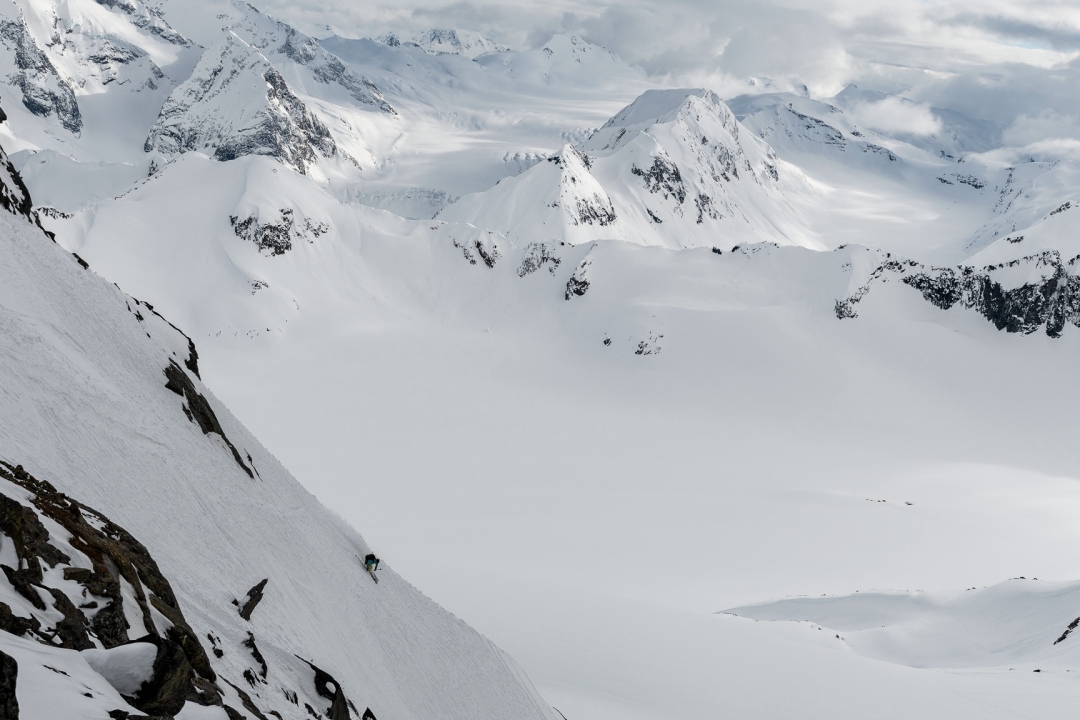
These fundamental points lay the groundwork for being able to tackle big, steep descents. There are many more specific techniques needed in a steep skier’s quiver, so stay tuned for a more in-depth look into the skills required.
Tom Grant is a member of the Jöttnar Pro Team. He works as an IFMGA guide with a specialism in skiing steep, technical terrain. Read more about him here.
Products worn: Vanir LT pant (the yellow ones)
